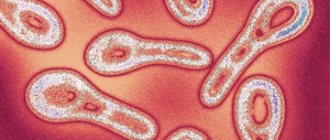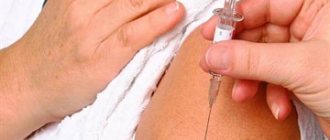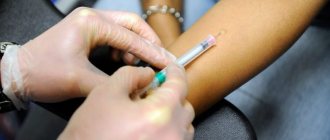Intravenous injection
– administration of medicinal substances directly into the bloodstream (vein). The main and unshakable rule of intravenous injection is compliance with the rules of asepsis: washing and disinfecting hands, using disposable syringes and systems.
For intravenous injections, veins located in the cubital fossa are most often used, since they have a large diameter and are located relatively close to the surface of the skin. The veins of the hand and forearm are also sometimes used, less often the veins of the lower extremities.
Veins are divided into:
Fixed vein
– displacement along the plane is insignificant
Sliding vein
– easily moves along a plane in the subcutaneous tissue.
Doctors prefer to use a fixed thick-walled vein (thick and dense in diameter).
A cube of air into a vein: fatal or not?
If you notice that during the injection small air bubbles entered your bloodstream, then you should not immediately panic - there will definitely not be a fatal outcome in such a situation.
Moreover, it makes sense to worry about this only if the intravenous injection was done incorrectly, since the air that gets into the muscle tissue or under the skin almost immediately dissolves in the cells, leaving no consequences, except perhaps short-term discomfort at the injection site. As for intravenous injection, it all depends on the size of the bubble itself. If you let air into a vein just a little, it will immediately dissolve in the cells of the body, as is the case with an intramuscular or subcutaneous injection. That is why the accidental entry of small bubbles into the body will not affect the patient’s health in any way.

Rules for administering an injection
What happens if air gets into a vein? This question arises in people not only because of films and detective novels, but also due to the fact that before an injection, nurses try to carefully squeeze out all the bubbles that are there from the syringe or dropper. Such caution among clinic workers involuntarily prompts the patient to think that if air is introduced into a vein, something very terrible will certainly happen. However, it is not. It’s just that similar procedures are required for any type of injection. Firstly, if all the bubbles are not removed, it will be quite problematic to administer the drug quickly and painlessly. Secondly, if air does get in, then in the first minutes the patient will actually feel “local” discomfort, calling the injection “sick”. But as practice shows, such unpleasant symptoms disappear after some time.
It is for these reasons that nurses try to give intravenous, subcutaneous or intramuscular injections according to all the rules. After all, few people will like a “sick” injection, after which it cramps an arm, leg or other parts of the body.
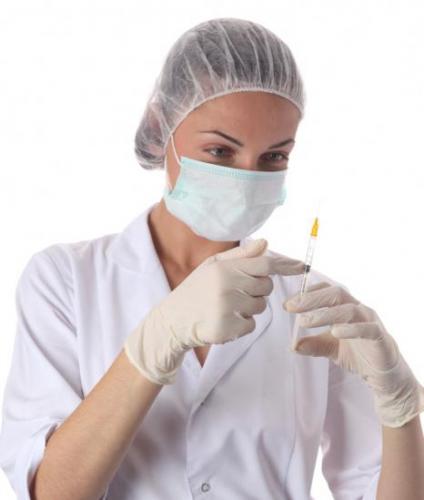
What is the difference between diseased veins and healthy ones?
In addition to external manifestations, internal changes occur. With varicose veins, the valves cease to perform their function, the blood flow changes its direction and flow in the opposite direction. This pathology is called venous reflux .
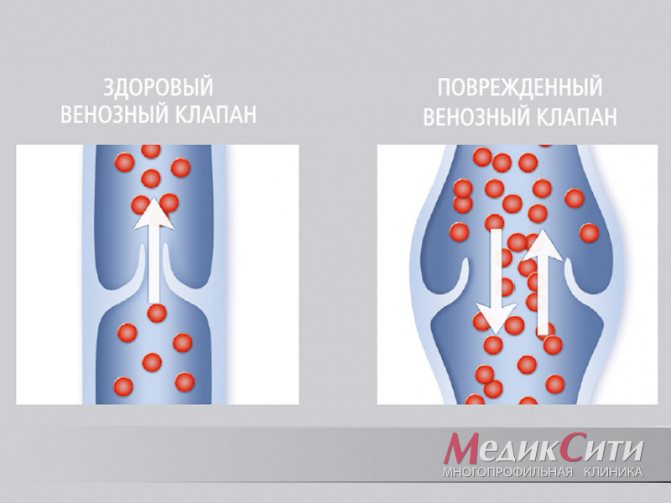
1 Difference between a healthy venous valve and a damaged one

2 Varicose veins
The patient may experience swelling in the limbs and cramps precisely due to the accumulation of blood in the veins.
Our clinic uses several minimally invasive methods for treating veins: sclerotherapy, miniphlebectomy, laser coagulation (laser treatment of spider veins), etc.
There is also such an innovative method of treating veins as the VenaSeal procedure - an alternative to surgery and laser treatment of veins.
A specially developed medical glue is injected into the varicose vein, gluing it from the inside. The blood is redirected through healthy veins. Symptoms of the disease - such as dilated veins, swelling, leg cramps and other manifestations - disappear.
If you know about your varicose veins, but are afraid of anesthesia and hospitalization, you should sign up for VenaSeal - a procedure that is performed in one day without pain and incisions!
Components of the VenaSeal system
- Special adhesive composition . Cyanolacrite glue has been developed for the treatment of saphenous stem veins. The composition is patented.
- Catheter . Its most important property is its inertness to the adhesive composition (it does not react with it).
- Dispenser gun . Delivers the adhesive composition exactly to the damage site in 3 seconds. With each press, 0.1 ml of the composition enters the vein.
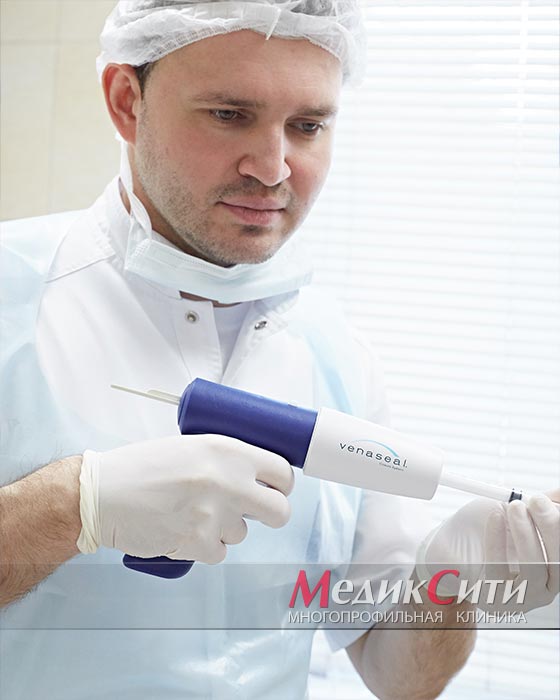
1 MedicCity phlebologist Maxim Popovtsev performs the Venasil procedure
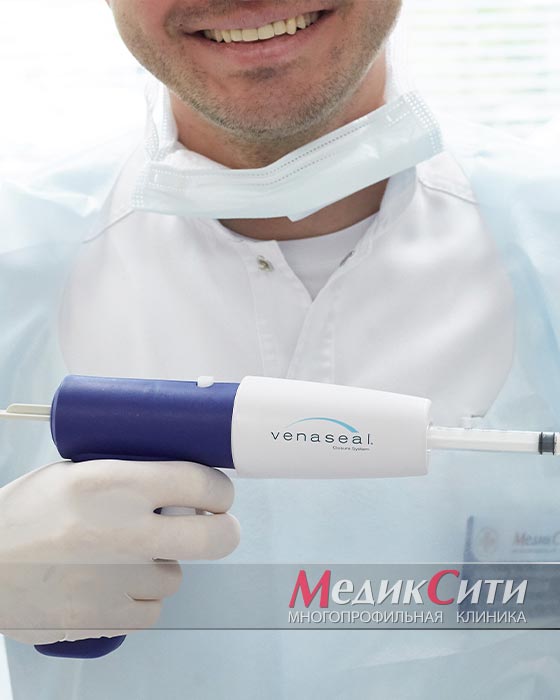
2 MedicCity phlebologist Maxim Popovtsev performs the Venasil procedure
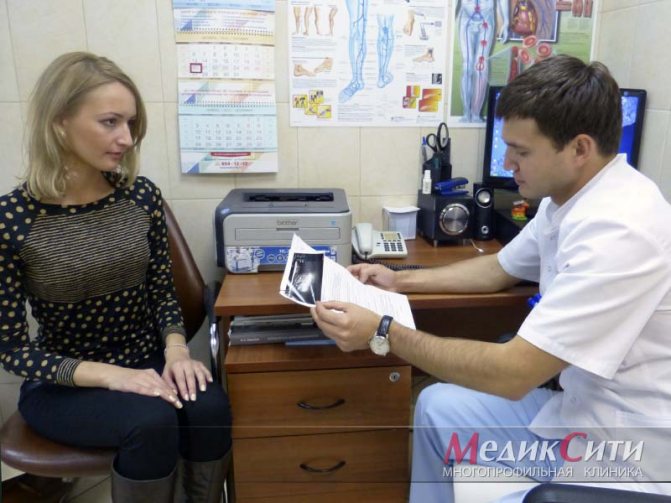
3 Consultation with MedicCity phlebologist Maxim Popovtsev
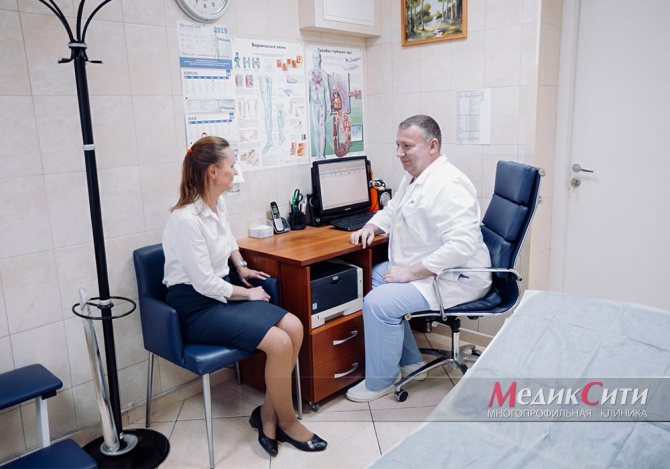
4 Consultation with MedicCity phlebologist Andrey Sychev
Where is it especially dangerous to inject air?
Just above, we told you that the entry of air into the body during an intramuscular or subcutaneous injection does not threaten human life. Moreover, if a syringe with air was inserted into a vein, then this is also not fatal. And this has nothing to do with the number of bubbles. After all, death will not occur due to accidental entry of air into any of the small veins. In this regard, it is advisable for best-selling authors to write about the ruthless killing of victims using large syringes and injections into the main artery. After all, this is the only way the patient may soon have a stroke or heart attack.
Advantages of VenaSeal over other techniques
What other methods of treating veins are there?
- sclerotherapy;
- treatment of varicose veins with laser (endovenous laser coagulation (EVLC);
- radiofrequency obliteration (RFO);
- phlebectomy, etc.
All of them are quite effective and are performed in our clinic, but VenaSeal has a number of undeniable advantages:
- No surgical intervention.
- Without the use of general and local anesthesia.
- No thermal influence.
- Without pain. Just one injection of painkiller.
- No side effects (allergic reactions).
- Without the need to wear compression stockings.
- No bruises.
- No special training. The only requirement is that the last meal should be 2 hours before the procedure.
- The duration of the operation is 30 minutes.
Sign up for the VenaSeal procedure and get rid of varicose veins! Phlebologist Maxim Aleksandrovich Popovtsev, a researcher at the Department of Surgery, is fluent in this method of treating veins.
The main advantage of VenaSeal glue is the absence of any anesthesia, even local. Who is this method especially suitable for:
- for allergy sufferers;
- elderly patients;
- patients with severe concomitant diseases.
And of course, for those who prefer VenaSeal to other methods of getting rid of varicose veins.
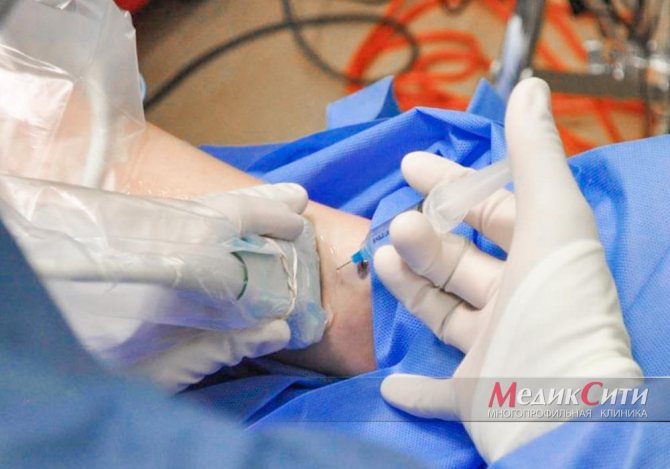
1 Venasil vein treatment procedure in MedicCity
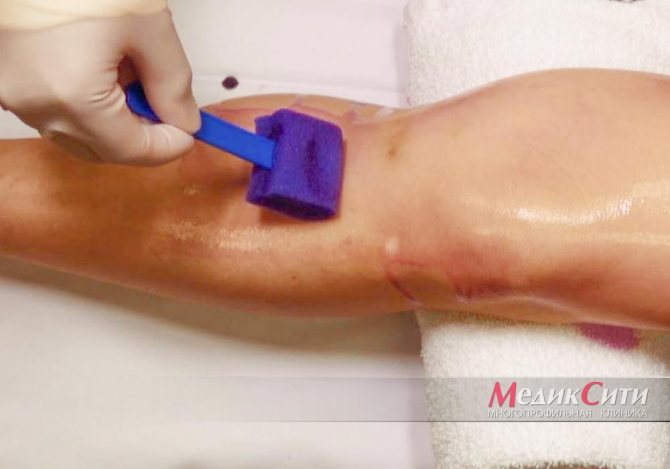
2 Venasil vein treatment procedure in MedicCity

3 Venasil vein treatment procedure in MedicCity
Differences from sclerotherapy
Sclerotherapy is a popular non-invasive treatment method in which the diseased vein is “sealed” with a sclerosant (a medicinal substance). This method is not as effective as VenaSeal and does not treat varicose veins in such an acute form.
Treatment at different stages. VenaSeal is used to treat large varicose veins. Sclerotherapy – to close superficial and venous capillaries.
Efficiency. Foam for scleropathy acts chemically on the inside of the vein. As a result, the vessel closes, but the effect is temporary. According to patient reviews, the effectiveness of the VenaSeal system reaches almost 100% effectiveness.
Difference from laser and RFO treatment
Unlike laser and radiofrequency treatment, the procedure for treating veins with the VenaSeal system occurs without heating the veins and injections of local anesthesia. And without the need to wear compression stockings for two weeks after the procedure!
Difference from phlebectomy
Phlebectomy is an operation to remove subcutaneous varicose veins, VenaSeal is a minimally invasive intervention. MedicCity phlebologists recommend resorting to this method as the least traumatic.
Treatment of veins with the VenaSeal system is an alternative to surgery; the composition normalizes blood flow and eliminates venous reflux in just a few seconds. Throughout the entire medical process, the phlebologist monitors using ultrasound scanning.
How is air removed correctly?
The rules for administering an injection are the same for everyone. That is why absolutely every medical worker is obliged to remove air from the medical device before injection. Let’s look at how exactly this is done a little further.
- From a syringe (for intramuscular, intravenous or subcutaneous injection). After drawing the medicine, the syringe is raised vertically with the needle up, and then the nurse makes light clicks on its body, thereby knocking all the bubbles together (into one air pocket). Then, by gently pressing the piston, the air is squeezed out. In this case, you should definitely release some of the drug, along with which all the remaining bubbles will go away.
- From IVs. Before inserting the system into the patient, medical staff perform all the same actions as with a syringe before an injection. By the way, if the liquid in the dropper runs out before the nurse removes the needle from the patient’s vein, then the air will not enter the human body in any case, since there is simply not enough pressure in the system for this.
- From complex medical devices. In such devices, where a sufficient amount of air can accumulate to cause death, there are special filters that automatically remove absolutely all existing bubbles.
What dose of air during injection is life-threatening?
As mentioned above, during a regular injection, only a minimum of air bubbles can accidentally enter the body, which will not in any way affect the person’s well-being. As for the possible lethal outcome, you have to try very hard for this. After all, according to experts, an air embolism will only occur if at least 200 ml of bubbles are injected into a vein. Only in this case they will not be able to resolve properly, which may well cause a stroke or heart attack.
- How to hit a vein the first time
Why do you need to undergo the VenaSeal procedure with us?
We guarantee the sterility of the procedure. The package with instruments and medication can only be opened once.
In 2015, the safety and effectiveness of VenaSeal bioadhesive was confirmed by an American commission.
What is the secret to the success of vein treatment with VenaSeal biological glue?
The low-invasiveness, painlessness of the method and the professionalism of our phlebologists! MedicCity employs specialists in ultrasound diagnostics and laser treatment of veins with over 11 years of experience. Among our doctors is a candidate of medical sciences and a researcher at the Department of Surgery of the First Moscow State Medical University.
Vein treatment is easy! Make sure of this by watching the video in which Maxim Popovtsev performs the procedure.
You can look at protruding veins in disgust for years and buy ointments without a doctor’s prescription. Or we can get rid of them quickly, without pain, through one puncture.

